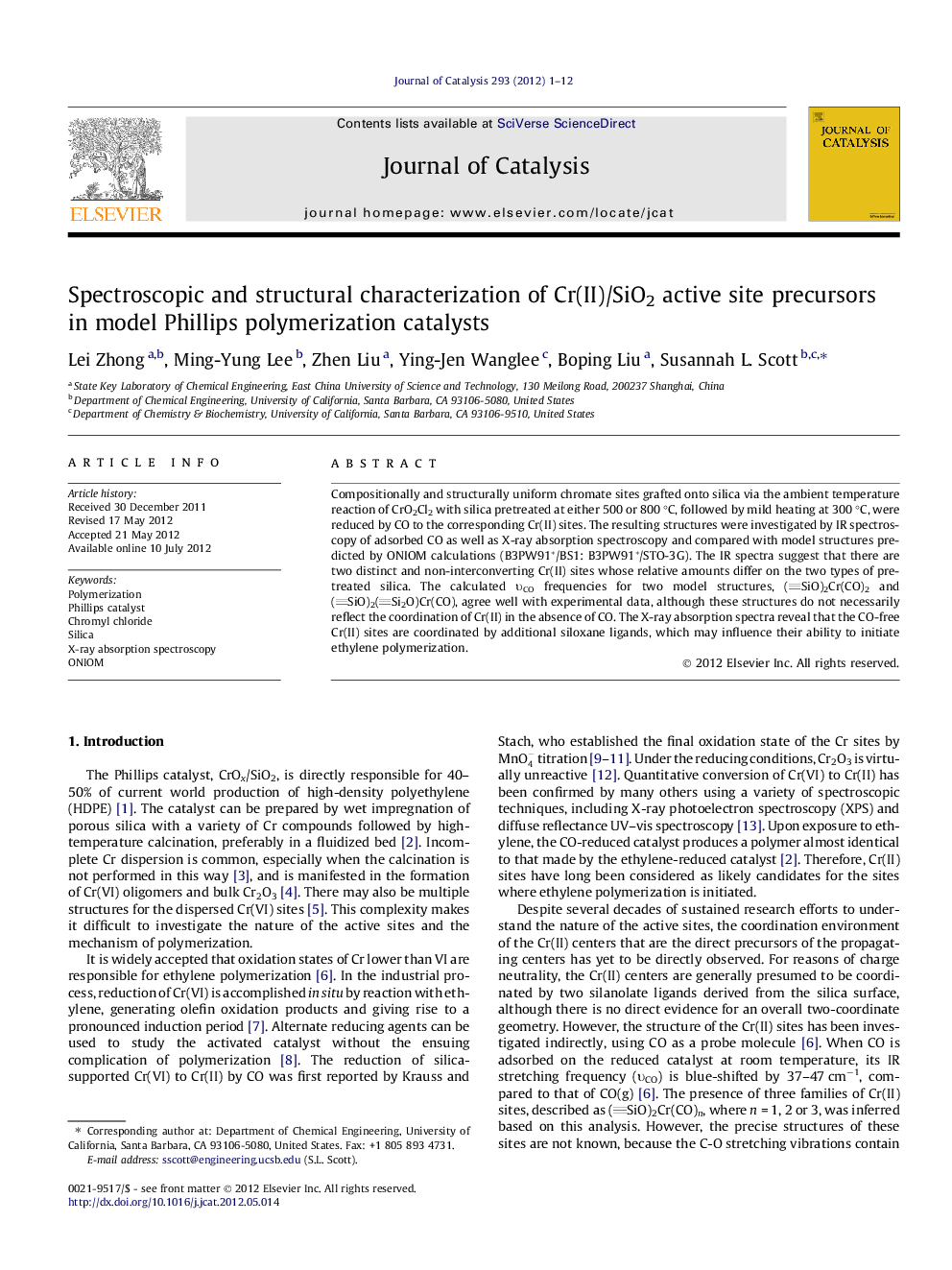| Article ID | Journal | Published Year | Pages | File Type |
|---|---|---|---|---|
| 61466 | Journal of Catalysis | 2012 | 12 Pages |
Compositionally and structurally uniform chromate sites grafted onto silica via the ambient temperature reaction of CrO2Cl2 with silica pretreated at either 500 or 800 °C, followed by mild heating at 300 °C, were reduced by CO to the corresponding Cr(II) sites. The resulting structures were investigated by IR spectroscopy of adsorbed CO as well as X-ray absorption spectroscopy and compared with model structures predicted by ONIOM calculations (B3PW91*/BS1: B3PW91*/STO-3G). The IR spectra suggest that there are two distinct and non-interconverting Cr(II) sites whose relative amounts differ on the two types of pretreated silica. The calculated υCO frequencies for two model structures, (SiO)2Cr(CO)2 and (SiO)2(Si2O)Cr(CO), agree well with experimental data, although these structures do not necessarily reflect the coordination of Cr(II) in the absence of CO. The X-ray absorption spectra reveal that the CO-free Cr(II) sites are coordinated by additional siloxane ligands, which may influence their ability to initiate ethylene polymerization.
Graphical abstractFigure optionsDownload full-size imageDownload high-quality image (102 K)Download as PowerPoint slideHighlights► Cr(II)/SiO2 sites were prepared by the CO reduction of CrO2Cl2-modified silica. ► Variable siloxane coordination to Cr is evident in the EXAFS. ► Sites with a non-displaceable siloxane appear to be the direct precursors of the ethylene polymerization sites.
